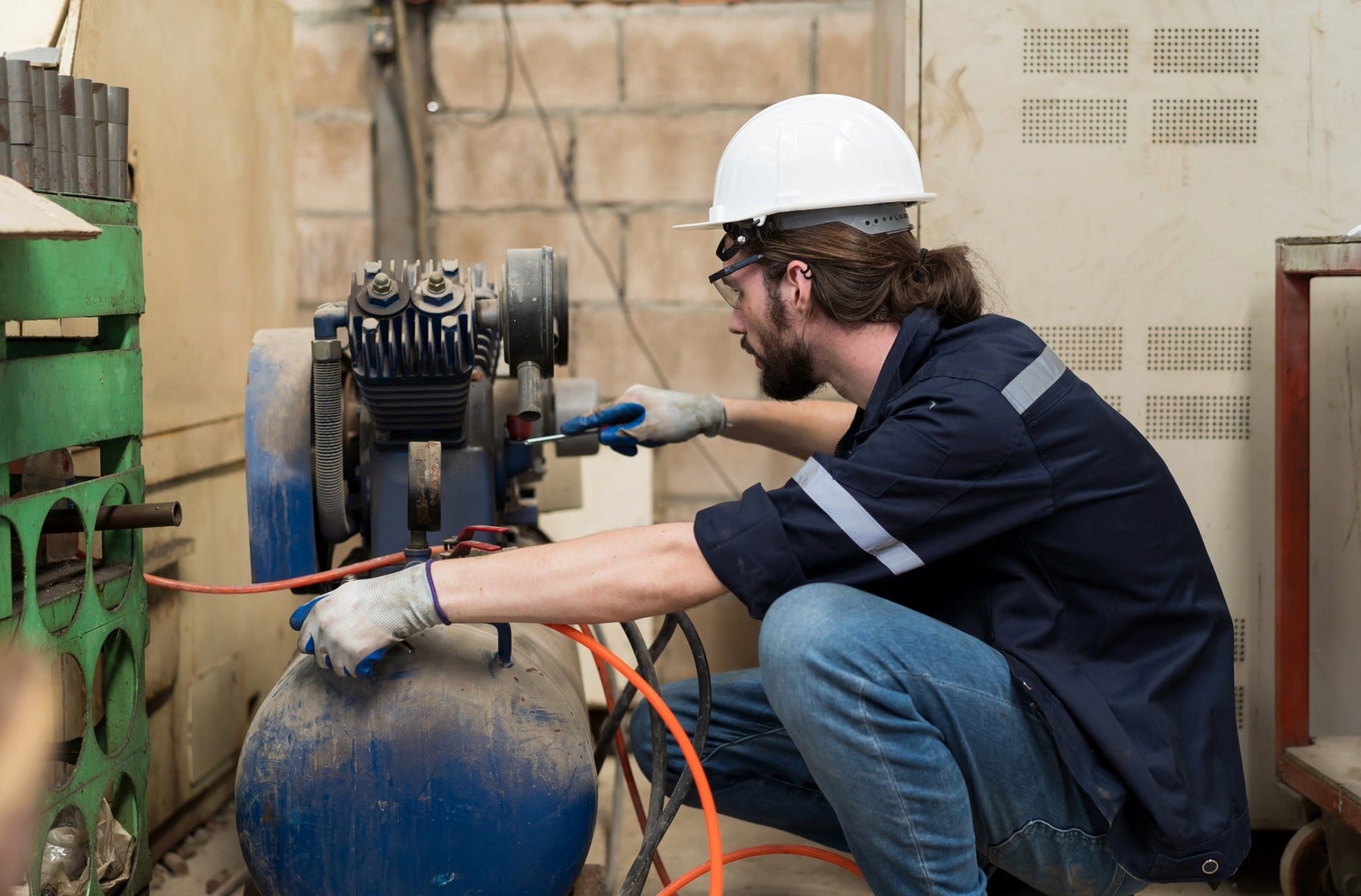
Air Separator System Maintenance
A well-functioning air separator system is an important part of keeping an industrial compressor running without issues. Over time, contaminants can collect inside air lines, making the system work harder than it should. That leads to overheated components, pressure drops, and even equipment failure if it's left unchecked. Maintenance isn't just a good idea here—it helps protect your investment and keeps production moving without delays.
An air separator system helps remove oil, dirt, and moisture from compressed air before it reaches tools, machinery, or storage tanks. Clean, dry air is easier on everything downstream. To keep air clean and systems efficient, this equipment needs regular checks, cleanings, and part replacements. When handled routinely, many problems can be avoided before they start. Let’s walk through what regular maintenance looks like so you’re never caught off guard.
Regular Inspection And Cleaning
Just like any machine that puts in long hours, an air separator system needs someone to check under the hood now and then. Frequent inspections help catch problems early, before they turn into expensive or time-consuming repairs. You don’t need to wait until there's a weird noise or a dip in output. A quick scan of the equipment once a month can give you early signs of trouble, like leaks, build-up, or clogging.
Here’s what to keep an eye on during routine inspections:
- Look for oil residue collecting around connection points
- Check for temperature changes in the separator housing, which can be caused by restricted flow
- Listen for any new sounds when the compressor is running. A sudden rattle might mean something’s loose or worn out
- Examine all drain valves and filters to be sure they aren’t clogged
Cleaning your air separator isn’t complicated, but it needs to be done the right way to make a difference. Disconnect power and release pressure before doing anything. Once it’s safe, open up the separator housing to inspect the inside. Wipe away dust and debris. Some components may need to be soaked or replaced depending on build-up. Moisture can cause internal corrosion, so any signs of rust should be addressed quickly to prevent long-term damage.
Don’t forget to drain water if your separator is designed for moisture removal. Trapped water is one of the fastest ways a system can start to break down. Build-up causes pressure loss and forces the unit to work overtime to compensate. A clean separator protects the whole system.
Checking And Replacing Filters
Air separator systems rely heavily on internal filters to do their job. These filters trap fine oil mist, dirt, and other particles before they enter the air supply lines. Over time, those filters fill up, and once that happens, you’re going to feel it in pressure drops and rising operational temperatures. The longer those filters stay in past their service life, the harder your system has to work.
There are a few different filters in play here:
- Pre-filters catch major particles before they enter the separation unit
- Coalescing filters are used to remove oil aerosols and finer contaminants
- Final filters clean the air stream just before it reaches tools or processes
When any of these are clogged or overloaded, airflow suffers. That can lead to water and oil carryover, damaging your downstream components.
Here’s a quick checklist to handle filter replacements:
1. Turn off the system and make sure pressure is fully released
2. Identify which filters are due for replacement based on your maintenance records or visible signs like discoloration or residue buildup
3. Remove old filters carefully. Avoid knocking loose dust or particles into the housing
4. Clean the inside surfaces around each filter mount before installing new ones
5. Fit replacement filters and ensure a tight seal
6. Bring the system back online and monitor pressure and flow readings to confirm everything is running normally
Sticking to a fixed schedule, rather than waiting for warning signs, helps prevent overuse. There’s no one-size answer for every shop, but once every few months is common for most setups running a normal load. If your system runs non-stop or under a heavy load, replacements may need to happen more often to keep up.
Lubrication And Component Care
Keeping your air separator system well-lubricated is like ensuring your car engine has enough oil. It reduces friction and prolongs life. Regular lubrication helps the components work smoothly, preventing unnecessary overheating or wear. It's not just about adding oil when things get noisy. It’s about maintaining a schedule that fits your system’s workload and environment.
Different parts have different lubrication needs. For example, bearings and gears usually require more frequent attention. Here’s a simple guide to ensure proper care:
1. Identify which parts need lubrication and how often it’s recommended for each
2. Use the right type of lubricant approved for your specific components
3. Before adding new lubricant, clean off any old, dirty grease to avoid contamination
4. Apply the lubricant evenly, avoiding over-saturation which could cause leakage or buildup
5. After lubricating, check that all seals and connections are tight to prevent leaks
By following these steps, you help each part move smoothly, reducing internal wear and extending the life of your whole unit. Consider consulting the system manual or a professional for guidance tailored to your specific equipment.
Professional Maintenance Checks
While regular upkeep can be handled on your own, there’s great value in bringing in a pro from time to time. Professional technicians have the experience and eye for detail that's hard to replicate. They can pinpoint small issues before they balloon into major problems, saving you time and cost in the long run.
Here are some benefits of professional maintenance visits:
- Technicians can calibrate system settings for better performance
- They conduct thorough inspections, identifying wear on parts that may not be obvious
- Proper diagnostic tools are used to evaluate system condition and possible weak points
- Professionals can suggest part upgrades or maintenance tips based on your system’s unique demand
Think about scheduling a check at least once a year. If your system runs around the clock or under heavy pressure, more frequent checks may be a smart move. It keeps your setup working reliably and avoids unexpected downtime.
Ensuring A Long Lifespan For Your Air Separator System
Taking care of your air separator system comes down to consistency. Regular inspections, cleaning, filter changes, lubricating moving parts, and having professionals take a look all play a role in performance and reliability. When your system runs better, everything downstream does too.
By sticking to a simple maintenance routine, you reduce the chance of sudden breakdowns that delay production. Clean air flow, steady pressure, and durable parts all lead to longer system life and energy savings. These habits are easy to build into your monthly or quarterly workflow and make a big difference over time.
A few minutes now and then can keep your shop running steady and help avoid those expensive emergency repairs down the line. Taking proactive steps with your air separator system keeps your operations safe, efficient, and running without surprise hiccups.
Keep your equipment running at its best with regular maintenance and expert support. At Compressor Filter Hub, we’re here to help you find the right parts to keep things operating smoothly. Explore our reliable air separator options designed to match your system’s needs and avoid unexpected breakdowns.
